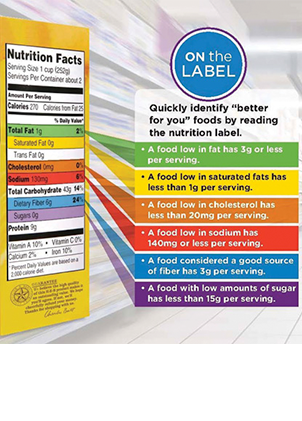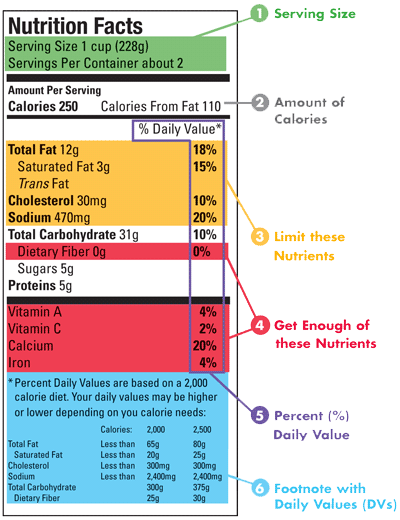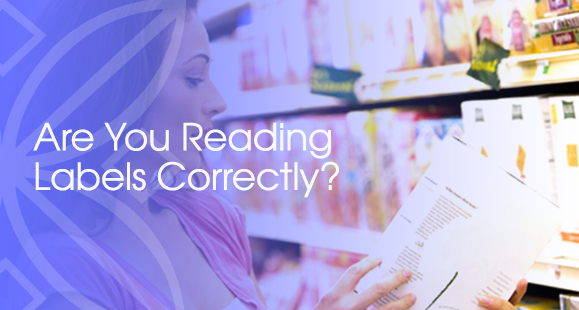Food nutrition labels are intended to help you choose healthier food options, but deciphering them can be challenging. In fact, to properly read a nutritional label, consumers must have a basic understanding of nutritional requirements. We want to help you make healthy food choices by breaking down the terms used on nutritional labels and explaining how to identify healthier foods.
Important Numbers
 Food label numbers apply to adults on a 2000-calorie a day diet, not to children, active adults or those on restricted diets.
Food label numbers apply to adults on a 2000-calorie a day diet, not to children, active adults or those on restricted diets.
- Serving Size -Â The serving size is the amount of product that the remaining numbers on the label apply to. Thus, it is one of the most important numbers. Many people underestimate the amount that they eat and miscount their nutritional intake when reading the label. For example, a chip label may refer to 10 pieces as the serving size, but realistically you may eat 20 pieces. Start by understanding the serving size that you will actually eat so that you can increase the remaining numbers accordingly.
- Calories – The label also displays the calories and the calories from fat. While it’s best to choose low-calorie products, not all calories are bad. To identify healthy products, look for ones with a low number of calories from fat.
- Fat, Cholesterol, Sodium, Sugar – These ingredients are not beneficial and you should choose foods with the lowest amounts possible.
- Fiber, Vitamin A, Vitamin C, Calcium and Iron -Â These are all beneficial items that you should aim to eat more of.
Recommended Daily Values
Nutritional labels are required by the Food and Drug Administration and list both beneficial and harmful components of the food. Each item has a recommended daily intake number represented by the term % DV. For beneficial items, the label shows how much you should consume in a day and the percentage contained in a single serving of that food. For negative items such as fat, sodium or cholesterol, the label provides the maximum amount recommended and the percentage contained in a serving of the food.
 Total fat should be limited to between 56 and 78 grams a day and cholesterol intake should be 300 mg or less. This includes 16 grams of saturated fat and less than two grams of trans fat. When a product contains zero trans fat, it actually means that there are fewer than 0.5 grams per serving. If you eat more than one serving you will quickly reach your limit of trans fat.
Total fat should be limited to between 56 and 78 grams a day and cholesterol intake should be 300 mg or less. This includes 16 grams of saturated fat and less than two grams of trans fat. When a product contains zero trans fat, it actually means that there are fewer than 0.5 grams per serving. If you eat more than one serving you will quickly reach your limit of trans fat.
Fiber, Vitamin A, Vitamin C, Calcium and Iron are all beneficial elements and you should consume 100 percent of the daily-recommended value of each. In general, nutrient values that are 5 percent are low and values of 20 percent are high in nutrients.
The information in this article was obtained from various sources. This content is offered for educational purposes only and does not represent contractual agreements, nor is it intended to replace manuals or instructions provided by the manufacturer or the advice of a qualified professional. The definitions, terms and coverage in a given policy may be different than those suggested here and such policy will be governed by the language contained therein. No warranty or appropriateness for a specific purpose is expressed or implied.


